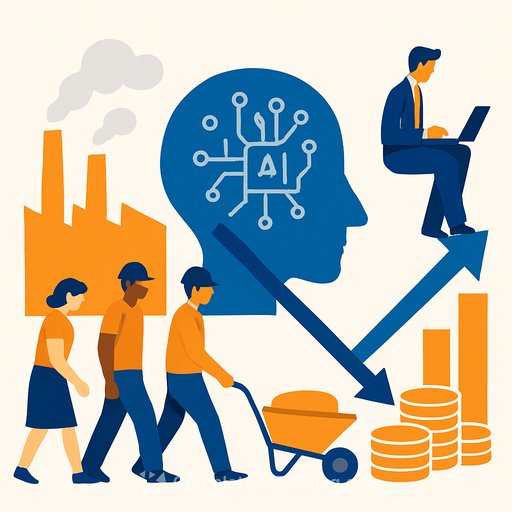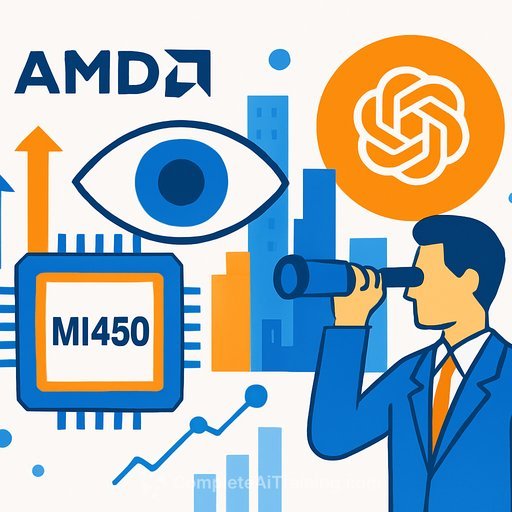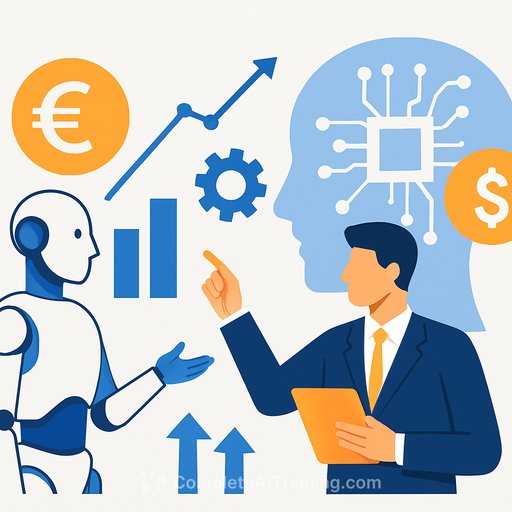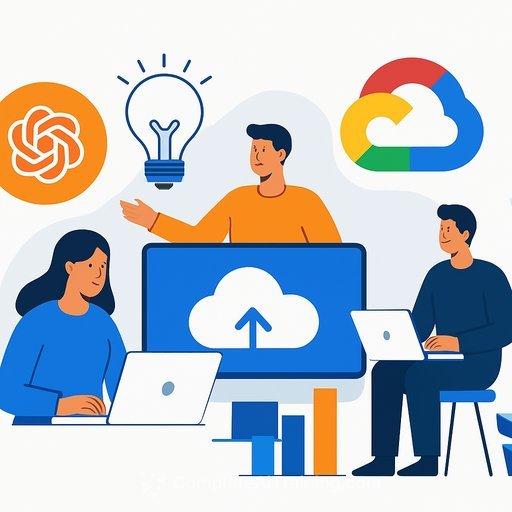The Hidden AI Disruption in Workforce Strategy and Its Impact on Tech Sector Valuations
The tech sector is shifting in a way few are openly discussing. It’s not just about AI automating tasks; it’s about how companies are rethinking workforce strategies and reallocating capital toward AI infrastructure and engineering. This change is affecting company valuations, creating clear winners and losers. For those involved in product development, understanding which companies are adapting is critical—those stuck in old models risk falling behind.
The Underreported AI-Driven Layoff Wave
Between 2023 and 2025, over 170,000 tech jobs across 600+ companies were cut, with AI quietly driving these decisions. These layoffs target roles where AI now outperforms human labor. For example, Microsoft cut 15,000 jobs in 2025, including 9,000 in July alone, as AI like GitHub Copilot writes up to 30% of new code. IBM replaced thousands of HR positions with AI chatbots, while Google and Meta have trimmed teams in areas like Android and Reality Labs to focus on AI projects such as Gemini and Bard.
The pattern is clear: AI is shifting the value of labor. Roles in software development, customer service, and content creation are shrinking, while demand grows for AI engineers, data scientists, and specialists in AI infrastructure. Even startups like Chegg and Bumble cut significant portions of their workforces—22% and 30%, respectively—to pivot toward AI-centric product development.
Capital Reallocation: From Labor to AI Infrastructure
The bigger story is how companies are reallocating capital. Money saved from layoffs is being reinvested into AI infrastructure, research, and talent. Microsoft's $80 billion AI investment in 2025 is largely funded by layoffs and operational changes. Amazon reduced its corporate workforce by 27,000 since 2022, redirecting funds toward AI-driven customer service and logistics.
According to McKinsey, 92% of companies plan to boost AI investments over the next three years, with 78% already using AI in at least one business area. This is shifting how valuations work. Traditional metrics like R&D spend or labor costs matter less. Instead, value centers on AI infrastructure maturity and the ability to scale AI systems effectively.
Valuation Shifts: Winners and Losers in the AI Era
Companies with mature AI strategies—Microsoft, Google, IBM—are seeing better earnings before interest and taxes (EBIT). McKinsey found organizations with CEO-led AI governance are 20% more likely to see strong financial results from AI adoption. On the flip side, firms tied to legacy workforce models face challenges. Intel, for example, laid off 21,000 workers in 2025 as it pivots toward AI-specific chips, impacting its stock in the short term but aiming for long-term AI alignment.
Meta’s layoffs in 2025, focusing on metaverse projects, show the risks of AI strategy misalignment. The broader market reflects this divide: the S&P Tech Select Sector Index outperformed the S&P 500 by 12% year-to-date, driven mainly by AI-capable companies. Firms heavily exposed to traditional roles like software engineering and customer service are facing margin pressures and skepticism from investors.
Investment Implications: Overweight AI-Capable Firms
For investors and product developers watching company trajectories, the advice is clear: favor firms with strong AI infrastructure and engineering capabilities. Watch for:
- AI Infrastructure Spending: Companies like Microsoft, Google, and NVIDIA reinvest layoff savings into AI chips, cloud platforms, and R&D.
- Workforce Reskilling: Firms investing in AI training for employees, such as Salesforce and IBM, are better positioned to scale AI adoption.
- Strategic AI Governance: CEO-led AI strategies correlate with higher returns, as seen with Microsoft.
Avoid firms heavily reliant on roles being automated unless they show a clear pivot toward AI. Intel and IBM stand out for successfully retraining workers and focusing on AI chips and cloud infrastructure as part of their turnarounds.
Hedging Against Legacy Exposure
While AI-capable firms offer growth potential, it’s wise to hedge against overexposure to legacy roles. This could mean:
- Shorting underperforming tech firms with weak AI strategies, such as Meta and Chegg.
- Diversifying into AI infrastructure companies like NVIDIA, AMD, and cloud providers (AWS, Microsoft Azure).
- Monitoring labor cost trends closely—high labor costs combined with low AI adoption risk squeezing margins.
Conclusion: The AI-Driven Capital Shift Is Here
The real disruption isn’t AI itself—it’s how companies are reallocating capital and labor. AI automates repetitive roles, but the real winners are those building and scaling AI infrastructure and agentic systems. For product developers and investors alike, the time to act is now. The gap between companies embracing AI and those stuck in old workforce models will only grow. Success will come to those betting on AI infrastructure, engineering talent, and governance, while cutting exposure to models that view labor as merely a cost.
Your membership also unlocks:






